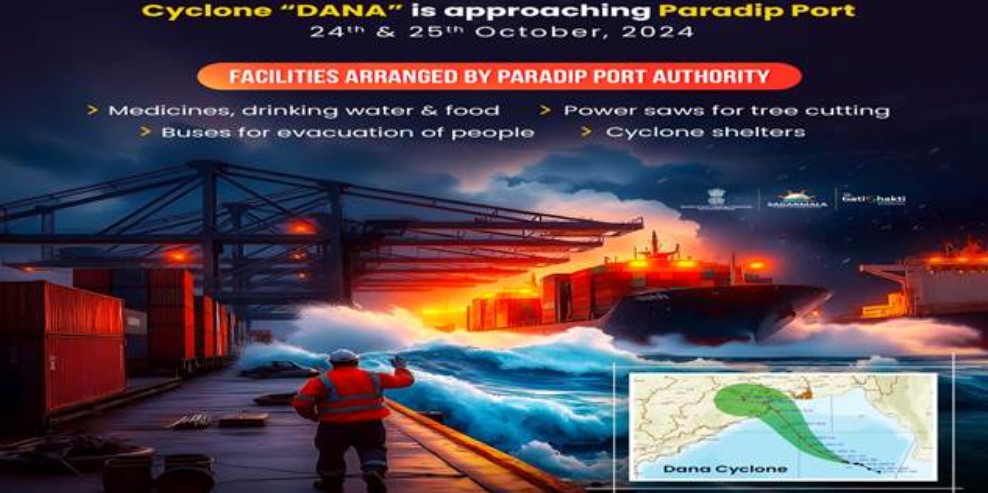
(Photo : PIB)
- Eastern India is on high alert as Cyclone Dana approaches, with massive evacuations, flight suspensions, and school closures in place.
- Approximately 50,000 people have been moved to safer locations, with plans to evacuate around 300,000 people.
- The National Disaster Response Force has deployed 56 teams in five states, focusing on Odisha and West Bengal.
- The authorities are closely monitoring the situation, ready to respond to emergencies, and taking all necessary precautions to ensure residents' safety.
As the eastern coast of India braces for the impending Cyclone Dana, a state of high alert has been declared in the states of Odisha and West Bengal. The cyclone, currently brewing over the Bay of Bengal, is expected to make landfall between midnight and Friday morning, with wind speeds predicted to reach between 100-110 kmph (62-68 mph), and gusts up to 120 kph (75 mph), according to the weather department.
In anticipation of the severe cyclonic storm, flights to and from the capital cities of these states, including Kolkata, have been suspended from Thursday evening to Friday morning. The suspension of air travel is a precautionary measure to ensure the safety of passengers and crew members, given the potential for severe weather conditions.
The impending cyclone has also led to the closure of schools in areas expected to bear the brunt of the storm. The government has advised fishermen not to venture out to sea, a move aimed at preventing potential loss of life and property.
Preparations and Precautions
Television footage has shown fishermen rushing to secure their straw homes and boats with ropes, a clear indication of the seriousness of the situation. The Adani group's Dhamra port in Odisha's Bhadrak region has also suspended operations in light of the approaching cyclone. The port, a significant hub for maritime trade, has taken this step to ensure the safety of its workers and to prevent damage to goods and infrastructure.
In a massive evacuation drive, approximately 50,000 people have been moved to safer locations, with plans to evacuate a total of around 300,000 people, according to Special Relief Commissioner Deoranjan Kumar Singh. The neighbouring state of West Bengal has also issued a red alert for three districts located close to the area where the cyclone is expected to make landfall.
The cyclone season, which runs from April to December each year, often brings severe storms that lash coastal cities in India and neighbouring Bangladesh, causing extensive damage. The worst cyclone to hit Odisha in recent years was in 1999, which raged for 30 hours and resulted in the deaths of 10,000 people.
Emergency Response and Historical Context
In preparation for Cyclone Dana, the National Disaster Response Force has deployed 56 teams in five states, with a particular focus on Odisha and West Bengal, the two most vulnerable states. These teams are equipped with rescue boats, medical supplies, and other emergency equipment, ready to respond to a range of emergencies, from floods to building collapses.
The Kolkata Municipal Corporation has opened a control room at its headquarters and cancelled the leaves of all essential staff to tackle any emergency. The Odisha power department has announced helpline numbers for the public to call in case of any emergency.
The eastern coast of India has a long history of cyclones, with some causing significant damage and loss of life. The region's vulnerability to such natural disasters underscores the importance of preparedness and timely evacuation measures. As Cyclone Dana approaches, the authorities are taking all necessary steps to minimize its impact and ensure the safety of the residents.
* This is a contributed article and this content does not necessarily represent the views of btin.co.in









